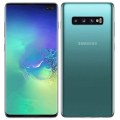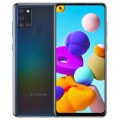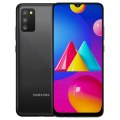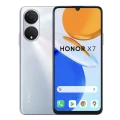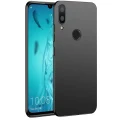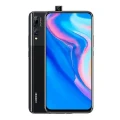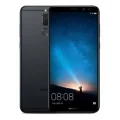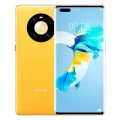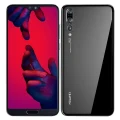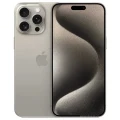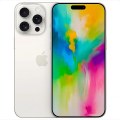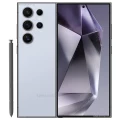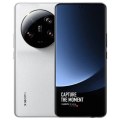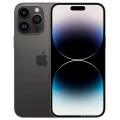- Awesome page
- Latest Mobile
- Smartphones
- Samsung Galaxy S7
Samsung Galaxy S7
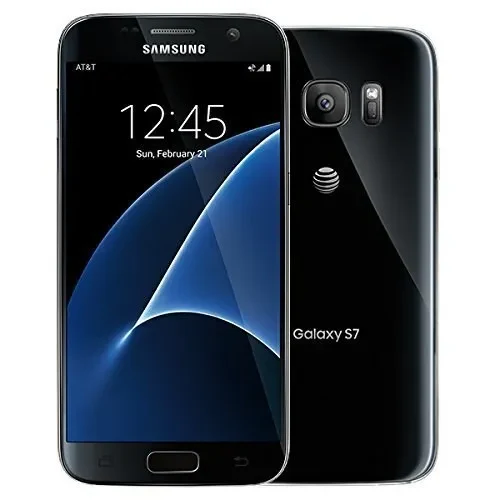


Samsung Galaxy S7 Price in Bangladesh
The Samsung Galaxy S7 is currently priced at BDT 26,990 in Bangladesh.
Key Features of Samsung Galaxy S7:
- Display: 5.1 inches Super AMOLED display, offering vibrant colors and excellent visibility.
- Performance: Powered by a 2.3 GHz Octa-core processor for smooth multitasking.
- Storage:
- RAM: 4 GB
- Internal Storage: Available in 32 GB or 64 GB variants, expandable up to 256 GB via microSD.
- Cameras:
- Rear Camera: 12 MP for capturing high-quality photos.
- Front Camera: 5 MP for selfies and video calls.
- Battery: 3000 mAh Li-Ion battery for standard usage.
The Galaxy S7 remains a stylish device with solid performance and storage options, making it suitable for those looking for a reliable smartphone experience.
Specifications
General
| Model | Samsung Galaxy S7 |
| Status | Available |
| Official price | 26990 |
Design
| Dimensions | 142.4 x 69.6 x 7.9 mm (5.61 x 2.74 x 0.31 in) |
| Weight | 152 g (5.36 oz) |
| Colors |
Black, White, Gold, Silver, Pink Gold |
Network
| Technology | GSM / HSPA / LTE |
| 2G Network |
GSM 850 / 900 / 1800 / 1900 - SIM 1 & SIM 2 - G930FD |
| 3G Network |
GSM 850 / 900 / 1800 / 1900 - SIM 1 & SIM 2 - G930FD |
| 4G Network |
LTE band 1(2100), 2(1900), 3(1800), 4(1700/2100), 5(850), 7(2600), 8(900), 12(700), 13(700), 17(700), 18(800), 19(800), 20(800), 25(1900), 26(850), 28(700), 38(2600), 39(1900), 40(2300), 41(2500) - G930F, G930FD LTE band 1(2100), 2(1900), 3(1800), 4(1700/2100), 5(850), 7(2600), 8(900), 12(700), 13(700), 17(700), 18(800), 19(800), 20(800), 25(1900), 29(700), 30(2300), 38(2600), 39(1900), 40(2300), 41(2500) - G930W8 |
| GPRS <strong>GPRS</strong> (General Packet Radio Service) is a packet oriented mobile data service on the 2G and 3G cellular communication system's global system for mobile communications (GSM), Generally, GPRS is used for the purpose of wireless data transfer, such as sharing pictures and videos or browsing the Internet via a mobile phone connection. | |
| EDGE <strong>EDGE</strong> (Enhanced Data GSM Environment) is a wireless network technology generally considered the next step in the 2G network offers data transfer rates up to four times faster than ordinary GSM networks, Generally, EDGE is used for the purpose of wireless data transfer, such as sharing pictures and videos or browsing the Internet via a mobile phone connection. | |
| Speed | HSPA 42.2/5.76 Mbps, LTE-A (3CA) Cat9 450/50 Mbps |
Display
| Display Type <strong>Display Technology => </strong> A number of display technologies and types used in mobile phones => TFT (Thin Film Transistor), IPS (In-Place Switching), OLED (Organic Light Emitting Diode), AMOLED (Active-Matrix Organic Light-Emitting Diode), Super AMOLED (an even advanced version of AMOLED), Resistive Touchscreen (Resistive touchscreens contain two layer of conductive material with a very small gap between them which acts as a resistance), Capacitive Touchsceen (Capacitive touchscreen technology consists of a layer of glass coated with a transparent conductor) | Super AMOLED capacitive touchscreen, 16M colors |
| Size | 5.1 inches, 71.5 cm2 (~72.1% screen-to-body ratio) |
| Resolution | 1440 x 2560 pixels, 16:9 ratio (~577 ppi density) |
| Features |
- Fast battery charging (Quick Charge 2.0) - Qi/PMA wireless charging (market dependent) - ANT+ support - S-Voice natural language commands and dictation - OneDrive (115 GB cloud storage) - MP4/DivX/XviD/WMV/H.264 player - MP3/WAV/WMA/eAAC+/FLAC player - Photo/video editor - Document editor |
Camera
Main camera
| Camera Setup | Single |
| Primary <strong>Camera</strong> is able to capture photographs and usually videos, The most important characteristics of a camera are the resolution (measured in megapixels), lens focus type (fixed or automatic), higher megapixel cameras are known to capture higher quality photos, but not always a good measurement of the photos quality. |
12 MP, f/1.7, 26mm (wide), 1/2.55&quot;, 1.4µm, Dual Pixel PDAF, OIS |
| Features |
LED flash, auto-HDR, panorama |
| Video | 2160p@30fps, 1080p@60fps, 720p@240fps, HDR, dual-video rec. |
Selfie camera
| Camera Setup | Single |
| Primary <strong>Camera</strong> is able to capture photographs and usually videos, The most important characteristics of a camera are the resolution (measured in megapixels), lens focus type (fixed or automatic), higher megapixel cameras are known to capture higher quality photos, but not always a good measurement of the photos quality. |
5 MP, f/1.7, 22mm (wide), 1/4.1&quot;, 1.34µm |
Hardware
| Chipset <strong>Chipset</strong> is a group of integrated circuits designed to perform one or a more dedicated functions, often with real time computing constraints, Popular smartphones are equipped with more advanced embedded chipsets that can do many different tasks depending on their programming. | Exynos 8890 Octa (14 nm) |
| CPU <strong>CPU</strong> (Central Processing Unit) mostly known as processors, CPU processes instructions in order to carry out certain functions that make your device operate properly. Processors are often described as the brain of computers, smartphones and tablets, Smartphones and tablets rely on processors to carry out their every task, Processors are an incredibly important factor in selecting any type of computing device, including your smartphone. | Octa-core (4x2.3 GHz Mongoose & 4x1.6 GHz Cortex-A53) |
| GPU <strong>GPU</strong> (Graphics Processing Unit) is a single-chip processor designed to rapidly manipulate and alter memory to accelerate the creation of images in a frame buffer intended for output to a display, This includes things such as lighting effects, object transformations, and 3D motion. | Mali-T880 MP12 |
| RAM (Memory) <strong>RAM</strong> (Random Access Memory) is a type of computer memory that can be accessed randomly, any byte of memory can be accessed without touching the preceding bytes that allows information to be stored and accessed quickly from random locations. RAM is the most common type of memory found in computer systems, smartphones, tablets and other electronic devices. | 4 GB RAM |
| Internal Storage <strong>Internal Storage</strong> is a data storage space (flash memory) mostly used in smartphones, tablets and other electronic devices where operating system, apps, music, photos, videos, files and other user data Is stored. | 32/64 GB |
| Sensors <strong>Sensors</strong> are electronic components that detects and responds to some type of input from the physical environment. The specific input could be light, heat, motion, moisture, pressure and location, The output is generally a signal that is converted to use in computing systems, a location sensor, such as a GPS receiver is able to detect current location of your electronic device. |
Fingerprint (front-mounted), accelerometer, gyro, proximity, compass, barometer, heart rate, SpO2 |
Connectivity
| Bluetooth <strong>Bluetooth</strong> is a wireless communications technology for exchanging data between mobile phones, headsets, computers and other network devices over short distances without wires, Bluetooth technology was primarily designed to support simple wireless networking of personal consumer devices. | 4.2, A2DP, LE, aptX |
| Infrared <strong>Infrared</strong> connectivity is an old wireless technology used to connect two electronic devices. It uses a beam of infrared light to transmit information and so requires direct line of sight and operates only at close range. | |
| USB | microUSB 2.0, USB Host |
| GPS <strong>GPS</strong> The Global Positioning System is a satellite-based radio navigation system, GPS permits users to determine their position, velocity and the time 24 hours a day, in all weather, anywhere in the world, In order to locate your position, your device or GPS receiver must have a clear view of the sky. | Yes, with A-GPS, GLONASS, BDS |
| NFC <strong>NFC</strong> (Near field communication) is a set of standards for smartphones and similar devices to establish peer-to-peer radio communications with each other by touching them together or bringing them into proximity, usually no more than a few inches. |
Battery
| Battery Type <strong>Battery Type => </strong> Cell phones run on various kinds of batteries depending on the manufacturer, phone size or shape and features. There are basically four types of cell phone batteries => Lithium Polymer, Lithium Ion, Nickel Metal Hydride and Nickel Cadmium. | Non-Removable Li-Po |
| Capacity <strong>Battery Capacity</strong> is a measure (typically in Amp-hr) of the charge stored by the battery, and is determined by the mass of active material contained in the battery. The battery capacity represents the maximum amount of energy that can be extracted from the battery under certain conditions. | 3000 mAh battery |
Samsung Galaxy S7 Review: Is It Still Worth Considering?
When it first launched in 2016, the Samsung Galaxy S7 was heralded as one of the most sophisticated and feature-packed smartphones of its time. Fast forward to today, and it remains a noteworthy device among smartphone enthusiasts who appreciate its design, performance, and unique features. This review evaluates the Galaxy S7 in detail, giving insights into its design, camera, battery life, and how it stacks up against competitors while reflecting on whether it still lives up to its reputation.
A Glimpse Into the Samsung Galaxy S7
Samsung unveiled the Galaxy S7 in February 2016 as the successor to the Galaxy S6. It was designed to refine and elevate the user experience with incremental but significant improvements. Sporting a premium design, advanced camera innovation, and enthusiast-pleasing features like expandable storage, the S7 quickly became one of the most popular choices for smartphone users worldwide.
Priced at BDT 26,990 in Bangladesh, the Galaxy S7 today presents an interesting proposition for users seeking a solid smartphone with proven reliability. But what exactly does it offer? Let’s break it down.
The Design and Build Quality
The Samsung Galaxy S7 is a fusion of style and durability. It features a sleek glass-and-metal design that feels premium and comfortable in hand. With a 5.1-inch form factor, it’s compact enough for one-handed use, making it an appealing option for those who find larger phones cumbersome.
Highlights of the Design:
- Ergonomic Feel: The curved back design ensures a snug and natural grip.
- Premium Materials: Corning Gorilla Glass 4 on both the front and back adds durability while maintaining a classy look.
- IP68 Water Resistance: Samsung made waves by introducing water and dust resistance to the Galaxy S7, allowing it to survive accidental spills or dips in up to 1.5 meters of water for 30 minutes.
Though the bezels may appear thick compared to modern smartphones, the Galaxy S7’s build quality still holds its own in terms of aesthetics and resilience.
Display and User Interface
The Galaxy S7 shines in the display department, literally. Equipped with a 5.1-inch Super AMOLED screen, the visual experience is nothing short of extraordinary.
Display Features:
- Resolution: A crystal-clear Quad HD (1440 x 2560 pixels) resolution delivers sharp, vivid images.
- Brightness: Excellent sunlight legibility ensures that text and images remain visible even under direct sunlight.
- Always-On Display: A practical addition that keeps notifications and time visible without draining excessive battery life.
On the software side, the Galaxy S7 ships with Android Marshmallow but can be upgraded up to Android Oreo. Samsung’s TouchWiz interface enhances the customization options, though it tends to feel slightly bloated compared to stock Android.
Camera Performance
The camera is undoubtedly one of the standout features of the Galaxy S7. At a time when smartphone photography was still finding its bearings, the Galaxy S7’s rear shooter brought innovation to the forefront.
Camera Specifications:
- Rear Camera: A 12 MP primary shooter with an f/1.7 aperture and dual-pixel autofocus technology. This delivers stunning low-light performance and sharp, detailed images.
- Front Camera: A 5 MP selfie camera perfect for everyday snaps and video calls.
- Additional Features:
- 4K video recording.
- HDR mode for vibrant color reproduction.
- Pro mode for manual control over settings like shutter speed and ISO.
Even today, the Galaxy S7 holds its own with everyday photography, offering excellent focus speed and lifelike colors.
Battery Life and Performance
Under the hood, the Galaxy S7 is powered by a 2.3 GHz octa-core processor, complemented by 4 GB of RAM. Available in 32 GB and 64 GB storage variants, it offers expandable memory up to 256 GB via a MicroSD card slot.
Key Performance Metrics:
- Smooth multitasking and app handling.
- Handles casual gaming effortlessly, though it struggles slightly with heavier graphics in modern titles.
- Battery Life: A 3000 mAh Li-Ion battery ensures all-day use with light to moderate activity. The inclusion of wireless charging and fast-charging support rounds off a functional and efficient battery system.
Unique Features
The Galaxy S7’s feature set helped it stand out in a saturated market at launch. These unique capabilities still make it a great contender for specific user needs:
- Water and Dust Resistance (IP68): Ideal for those on the move or prone to accidents.
- Expandable Storage via MicroSD card, a beloved feature for storing photos, videos, and apps.
- Wireless Charging added futuristic appeal (and convenience) to the package.
Comparison With Competitors
How does the Samsung Galaxy S7 stack up against its contemporaries? At the time of its release, it competed fiercely with devices like the iPhone 6s and the LG G5.
- iPhone 6s:
- The S7 won in terms of display resolution and camera low-light performance.
- However, Apple’s iOS operating system provided a smoother software experience.
- LG G5:
- While LG’s modular design was innovative, the Galaxy S7 was more polished and had better build quality.
Against today’s smartphones, the Galaxy S7 may lack a larger screen and updated features like 5G or ultrawide cameras. However, it is still highly functional and perfect for casual users on a budget.
What Users Are Saying
The Galaxy S7 has stood the test of time for many users.
Richard (United States): “The S7’s camera is remarkable for its age—I’m still snapping photos of my kids with it to this day!”
Mei Ling (Singapore): “The water resistance feature has saved me on several occasions. Plus, it’s small enough to slip into a pocket easily.”
Rahul (India): “Though the software feels a bit outdated now, this was hands down one of the best purchases I made in 2016.”
Final Verdict: Should You Consider the Galaxy S7?
The Samsung Galaxy S7 remains a capable device for users who value compact smartphones with excellent design and reliable performance. While it may not cater to those seeking the latest tech or advanced gaming capabilities, it certainly delivers on basics like photography, build quality, and ease of use.
If you’re a tech enthusiast or smartphone user looking for an affordable, all-rounder device, the Samsung Galaxy S7 remains a solid choice in 2024.
Have you used the Samsung Galaxy S7? Share your experiences with us in the comments below! Looking to explore other great devices? Stay tuned, or sign up for our newsletter.
